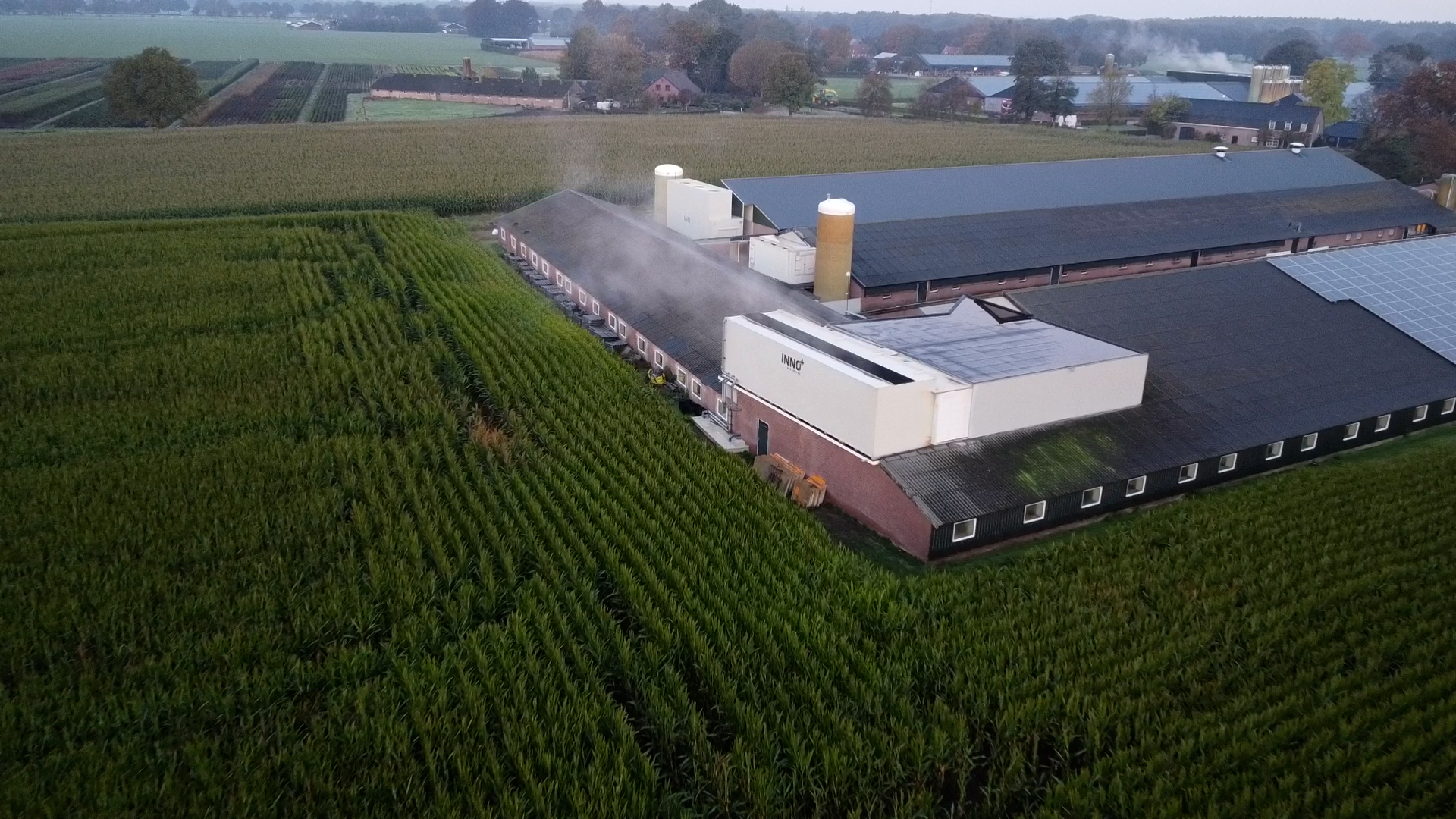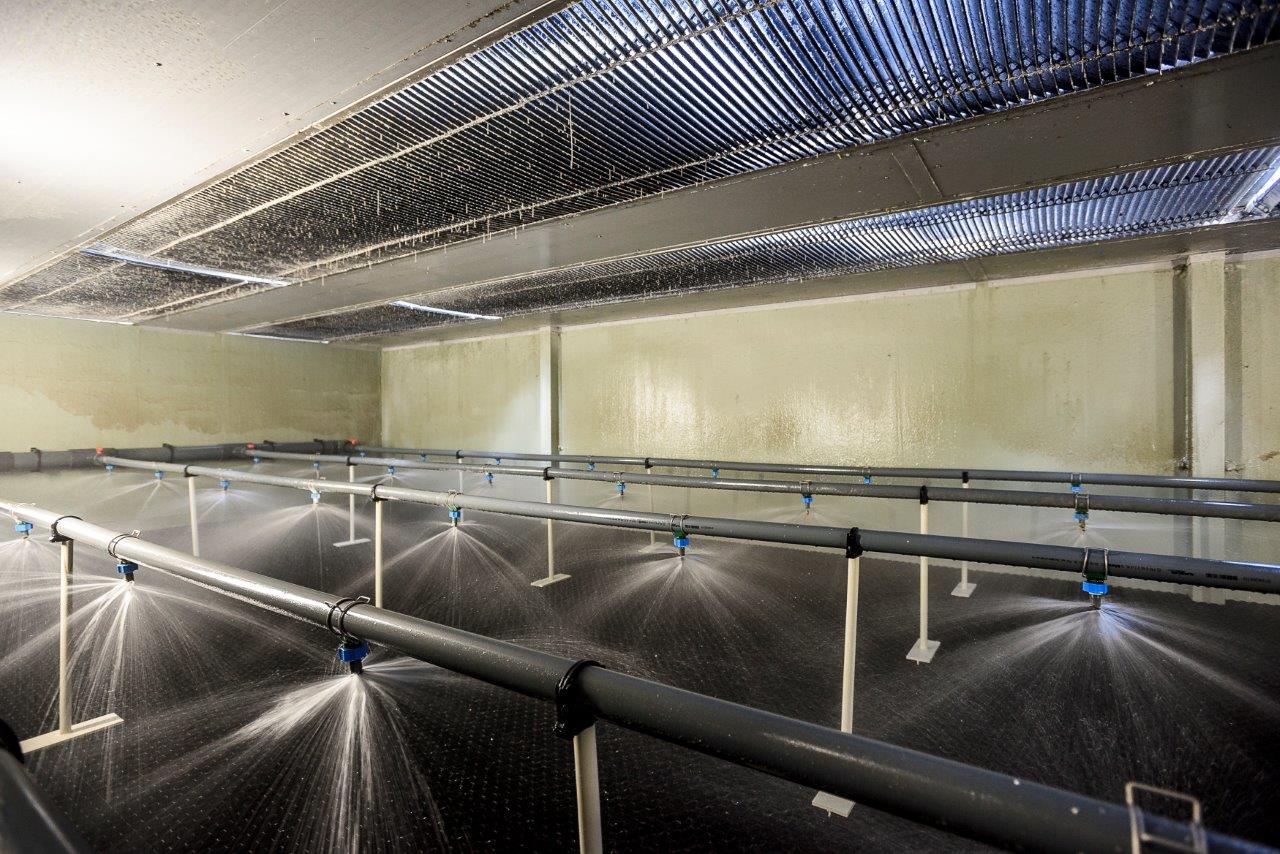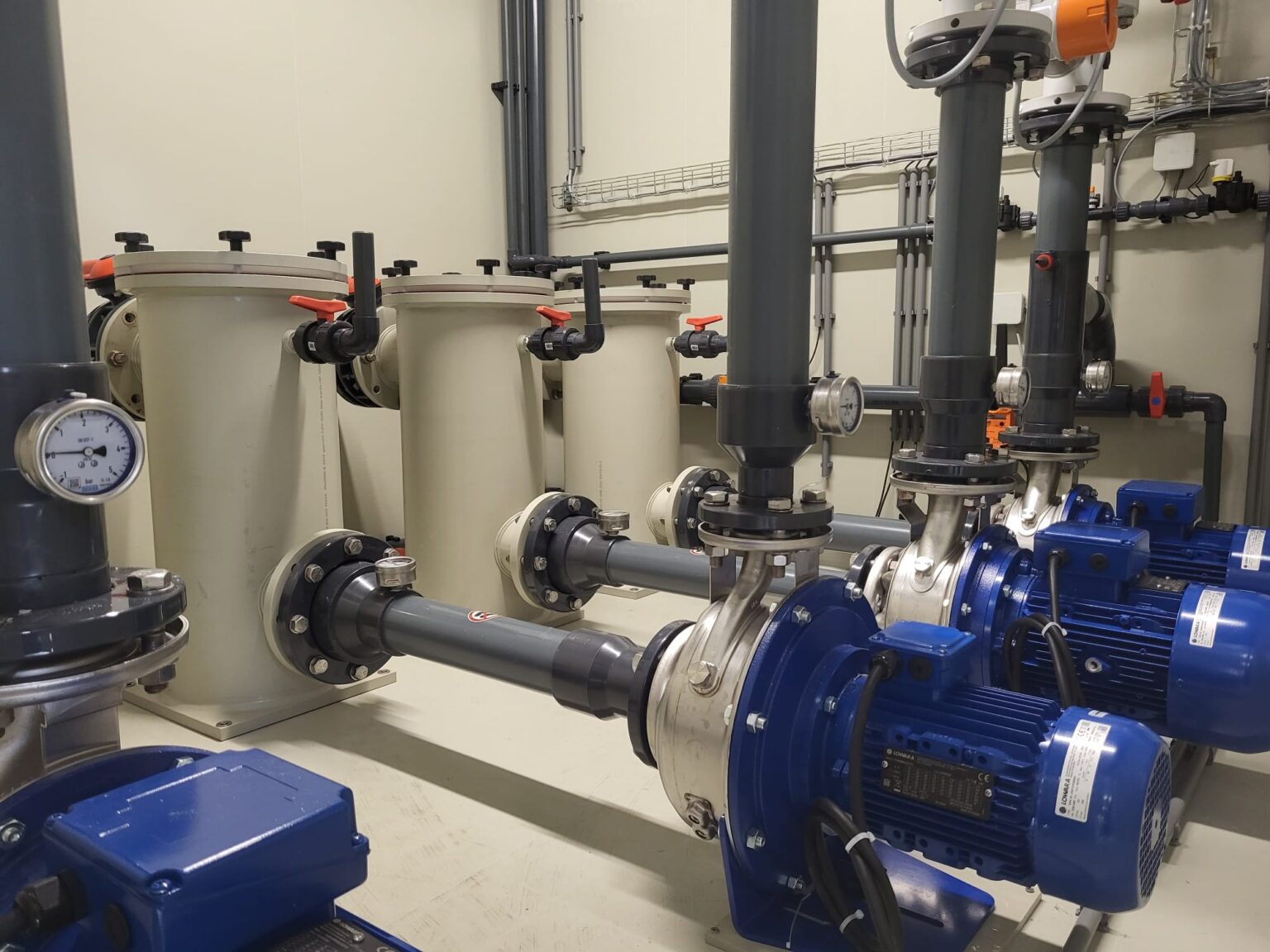
Ammonia scrubber: everything you need to know
How does an ammonia scrubber work?
An ammonia air scrubber works on the principle of gas absorption. Contaminated barn air passes through a chamber where it comes into contact with a scrubbing liquid, often water mixed with an acid.
The acid reacts with ammonia to form a harmless compound, such as ammonium sulfate. In agriculture, this by-product can even be reused as a valuable fertilizer, creating a circular benefit.
The process is reliable, safe, and specifically designed to handle the high and continuous ammonia emissions typical of poultry and pig housing.

Ammonia scrubber design for agriculture
The design of an ammonia air scrubber in agriculture is tailored to barn conditions and emission levels.
Key design features include:
- Packed bed towers: Maximize contact between air and scrubbing liquid, ideal for continuous barn ventilation.
- Corrosion-resistant materials: Because barn air contains dust and moisture, durable plastics and stainless steel ensure long-term performance.
- Energy-efficient systems: Designed to operate alongside barn ventilation with minimal additional energy use.
- Nutrient recovery: Captured ammonia can be processed into ammonium sulfate, offering farmers a fertilizer by-product.
Choosing the right ammonia scrubber design is crucial for agricultural efficiency, compliance with emission limits, and improved animal welfare.

Is an ammonia air scrubber expensive to maintain?
In agriculture, costs are manageable. Systems are built for long-term use and require only regular checks and fluid replacement.
Can ammonia scrubbers improve animal welfare?
Yes. Lower ammonia levels in barns reduce stress, improve breathing, and create a healthier environment for livestock.
Are ammonia scrubbers mandatory on farms?
Regulations vary by country. In the US, the EPA enforces limits in certain sectors, while in the UK, ammonia control is part of agricultural permitting. In practice, farms are increasingly required to adopt emission-reducing technologies.
